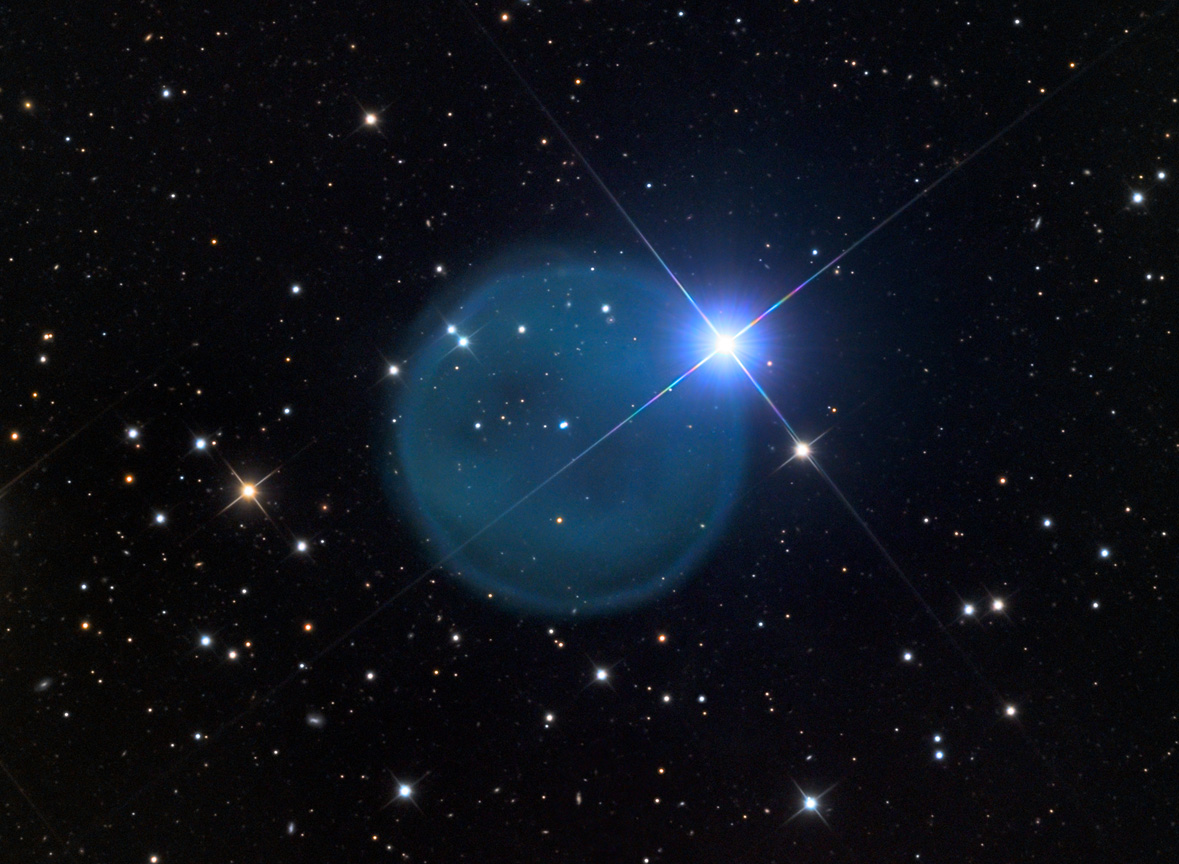When stars die, it’s *gorgeous*. Especially when Hubble is the one showing them to you. https://www.syfy.com/syfywire/hubble-sees-the-spectacular-deaths-of-stars-like-the-sun">https://www.syfy.com/syfywire/...
3/ The elongated, bipolar, and hourglass shapes we see in nebulae like this are probably due to the dying star engulfing a companion star (or close-in giant planet) when they expand into red giants. It spins them up, affecting the shape of the ejected gas.
4/ When the Sun goes through this it’ll probably throw a more spherical shell of gas around it, because it’s a solo star. It may look more like Abell 33, one of my favorites (pic via @ngc1535).
https://www.syfy.com/syfywire/an-enigmatic-blue-bubble-in-space">https://www.syfy.com/syfywire/...
https://www.syfy.com/syfywire/an-enigmatic-blue-bubble-in-space">https://www.syfy.com/syfywire/...
5/ I studied these kinds of nebulae for my master’s degree, looking at gigantic haloes of gas around them, blown away when the stars first start dying. Specifically this one (image by Niels Christensen), NGC 6826:
https://skyandtelescope.org/online-gallery/ngc6826-with-halo/">https://skyandtelescope.org/online-ga...
https://skyandtelescope.org/online-gallery/ngc6826-with-halo/">https://skyandtelescope.org/online-ga...
6/ This phase of a star lasts for maybe 10,000 years, the blink of an eye compared to the billions they shone before.
I sometimes think about the Sun doing this. It won’t be for 7 billion years or so, but it will happen. What will it look like? Will humans still exist?
I sometimes think about the Sun doing this. It won’t be for 7 billion years or so, but it will happen. What will it look like? Will humans still exist?
7/ Astronomy has taught me that there are things we can know, things we can figure out, but for some things we just have to wait and see. Patience is a little easier when you think of the future in terms of billions of years.
8/ Still. There are more immediate needs, things to pay attention to right *now*. Astronomy teaches that as well, and it’s easy to extrapolate that to life around you.
What needs your focus now? What can you change *today*?
I bet this hashtag may give you ideas: #Juneteenth https://abs.twimg.com/hashflags... draggable="false" alt="">
https://abs.twimg.com/hashflags... draggable="false" alt="">
What needs your focus now? What can you change *today*?
I bet this hashtag may give you ideas: #Juneteenth
9/9 Stars are born, stars die. I find, perhaps paradoxically, that helps me to remember what’s important to me in my life and to those around me. The Universe is big, but we’re a part of it. Make your piece a little better. https://www.syfy.com/syfywire/hubble-sees-the-spectacular-deaths-of-stars-like-the-sun">https://www.syfy.com/syfywire/...

 Read on Twitter
Read on Twitter




